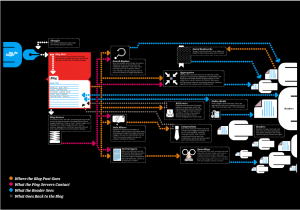Pois é. Minha cabeça está lá no antigo Israel, pois estou lendo FINKELSTEIN, I.; MAZAR, A. The Quest for the Historical Israel: Debating Archaeology and the History of Early Israel. Atlanta: Society of Biblical Literature, 2007, 220 p. – ISBN 9781589832770 e GRABBE, L. L. Ancient Israel: What Do We Know and How Do We Know It? London: T & T Clark, 2007, 328 p. – ISBN 9780567032546.
Mas, ainda muito cedo, quis me informar sobre a situação do Kosovo e sua tão celebrada (em nossos jornais) independência. Apesar de ser a renúncia de Fidel Castro à Presidência de Cuba a grande manchete do dia.
Sobre o Kosovo, leio um bom artigo em Carta Maior, de Flávio Aguiar, publicado ontem: Uma guerra atrás da esquina. A chamada diz: “A União Europeia, a Grã-Bretanha e os Estados Unidos, no afã de conter uma ‘Grande Sérvia’, potencial aliada de uma Rússia em vias de recuperação e sob a liderança com ares de neoczarismo de Vladimir Putin, podem estar fomentando o nascimento de uma ‘Grande Albânia'”.
E Flávio Aguiar menciona o texto de Simon Tisdall, A great leap in the dark [Um grande salto no escuro], em The Guardian, que vale a leitura. A análise tem a data de 14 de fevereiro: “The EU is setting a dangerous precedent by ignoring international law in its support for Kosovo’s independence”.
Procuro me situar melhor, inclusive geograficamente, já que a região é um verdadeiro mosaico de países “recentes”, e vou ao Le Monde diplomatique, em francês, onde encontro, além de um mapa, vários textos que analisam a situação da região.
Cito, como exemplo, a análise de Jean-Arnault Dérens, La boîte de Pandore des frontières balkaniques [A Caixa de Pandora das fronteiras balcânicas], na qual se diz: “Statut du Kosovo, impasse politique en Bosnie-Herzégovine… Tous les éléments d’une nouvelle crise régionale semblent réunis, sanctionnant l’échec des politiques menées depuis quinze ans par la ‘communauté internationale’. Dans ce contexte délétère, la vieille idée de redéfinir les frontières des Balkans refait surface. Alors que peuples, minorités et revendications s’entremêlent, cette approche pourrait plonger la région dans le chaos”.
Então resolvo ver se há algo sobre o assunto no Le Monde diplomatique Brasil. Ainda não há.
Mas levo um susto, logo cedo, pois li ali afirmações que eu nem sabia que podiam ser ditas assim às claras…
Em A nau dos dinossauros, o jornalista Johann Har explica que embarcou “em um navio de um branco ofuscante, dotado de dois restaurantes, cinco bares e quinhentos assinantes da National Review. Aqui, a guerra do Iraque é um ‘sucesso notável’. O aquecimento global ‘não existe’. A Europa está se transformando em um califado. E não tem para onde fugir”.
Confuso? A chamada do jornal diz: “No crepúsculo da Era Bush, centenas de neo-conservadores norte-americanos embarcam num cruzeiro marítimo, durante o qual debatem o ‘sucesso notável’ dos EUA no Iraque, a ‘inexistência’ do aquecimento global e o ‘risco iminente’ de dominação muçulmana sobre a Europa. Nosso repórter estava com eles”.
Só o tema mudou. Não a atitude, pois o pensamento das “viúvas de Bush” tem tudo a ver com a política internacional para os Bálcãs… e, penso, com a ala conservadora da arqueologia bíblica, denunciada por Finkelstein em The Quest for the Historical Israel, na página 10:
In the early days, conservative scholars deployed archaeology to help defeat the higher criticism of scholars such as […] But the truth of the matter is that archaeology was not given center stage in the debate. It was used only in order to support a preconceived theory. Archaeology played the role of supplying decorative evidence for a history that was a modern, almost word-for-word rewriting of the biblical story. By doing that, scholars of the conservative school promoted historical and archaeological reconstructions that had no actual support in the finds, or were trapped in circular argumentation.
